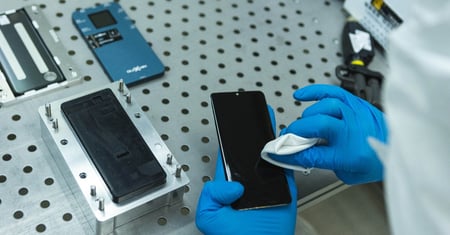Are you stuck with an inventory of returned or traded-in smartphones with smashed screens? Not sure how you’ll recover the best value from these?
While these are on your balance sheets, these devices will depreciate. Finding a way to repair the screens will maximize their potential value.
Ingram Micro Lifecycle offers smartphone screen repair for customers, including network operators and insurers. We combine technologies, innovatively repairing smashed LCD and LED smartphone screens to recover value and extend the device lifecycle.
In this article, we’ll explore how repairing smartphone screens reduces e-waste contributions, enable a circular economy, and boost your sustainability efforts.
What is a circular economy?
The circular economy moves away from the make, take, waste linear economy that we’re accustomed to. We produce, use, and throw away products in a linear economy. The circular economy seeks to extend its lifecycle for as many uses as possible.
It’s a much more sustainable approach as it reduces the volume of raw materials used for manufacturing. Instead, it uses what we already have in circulation for longer, including harvesting parts for repairing similar products.
The problem with e-waste
What happens to the technology you use and no longer require? At home, perhaps you’ve got old mobile phones lying around. We hope you’re investing in ITAD services for your business, which securely decommission unwanted devices.
But beyond that, where do they go?
Chances are that if you’re not recycling them responsibly, they end up in e-waste.
Damaged screens are potential contributors to e-waste.
Over 91% of the world’s population owns a mobile phone. That’s over 7 billion people.
Consider that some of those people may possess multiple phones for work and personal use. That means over 7 billion mobile phones are in circulation, susceptible to damage.
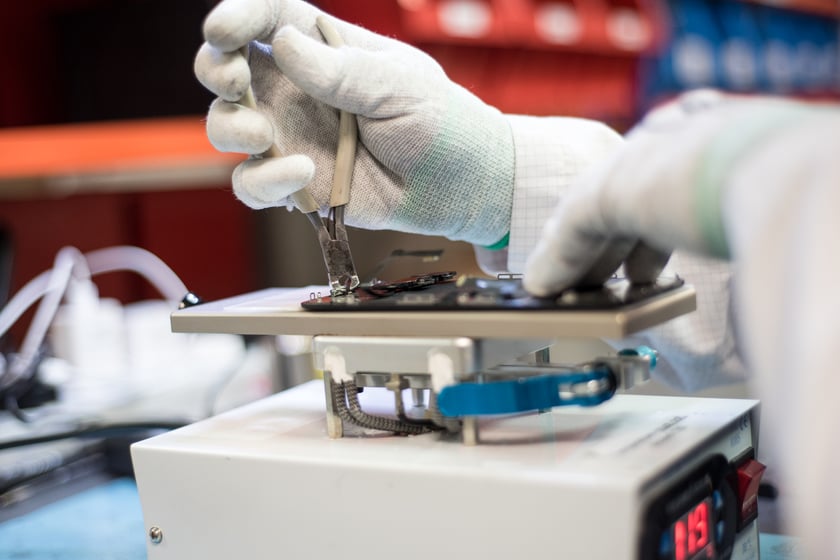
How does a phone screen break?
On average, Americans will experience six heart-stopping moments every week when they almost drop their phones. Users drop phones four times every week, and 61% have cracked the screen or damaged their phone.
Older smartphones have LCD (Liquid Crystal Display) screens, and more modern phones have various forms of LED (Light Emitting Diode) screens.
Both involve multiple layers within the smartphone screen, each serving a different purpose.
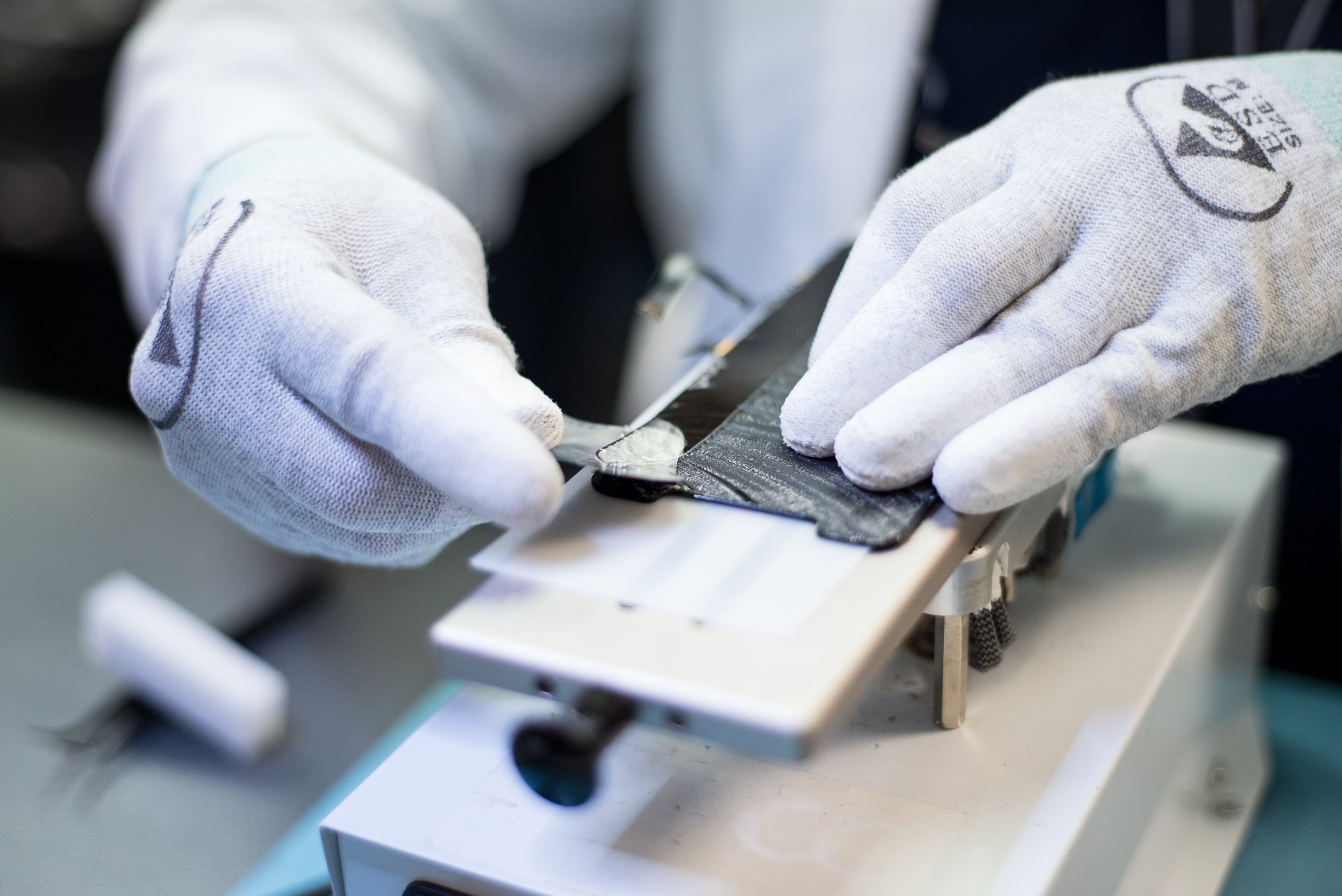
The top layer in both cases is glass. When a phone is dropped or scratched, it’s the glass layer most prone to damage.
Mobile phones have become intrinsic to daily life. Think about how much time you and those around you spend using a phone – messaging, checking emails, scrolling through social media feeds, watching animal videos, taking selfies, looking up what other films you’ve seen that actor in, finding a recipe that uses those residual ingredients in the fridge… the list goes on.
It’s impossible to avoid the device succumbing to an accident, but we can mitigate the damage.
Why don’t users fix their smashed phones?
When surveyed, 59% of people would rather get an upgrade of their device rather than fix their old one.
65% of office workers use a mobile phone that’s damaged.
The role of technostress
Using a damaged phone is considered a way of dealing with technostress - the pressure of being responsible for brand-new, likely expensive, technology. We walk around with a responsibility to protect the shiny device, so when we fail and damage it, the pressure is gone.
If we repair the phone, we reinstate that stress. Some people are more ready to shoulder that potential burden than others.
Technostress is also a contributing factor in the rise in demand for refurbished phones.
The role of finding quality repair services
Finding a reliable and professional repairer takes time. Consumers may not be willing to invest the effort in finding a high-standard repairer or have the time to take the phone for repair.
There’s also a lack of awareness around the implications of getting an independent repair – will it void the warranty? How long does it take?
Users will want limited downtime, keeping them connected for as long as possible. While the phone could work with a smashed screen, taking the device for repairs means they are without a working phone.
The role of price
Other reasons cited are the costs of repairs, with some users finding that it was more cost-effective to get a replacement phone.
Annual income also plays a part, with lower earners more likely to seek repairs rather than hold off and buy a replacement.
Income also affects the accessibility of technology. Higher affluence leads to increased technology ownership, reducing reliance on a single device.
As technology has advanced and become more intricate, so have the efforts needed to repair. Gone are the days when you could buy a replacement battery for example, pop off your phone’s back cover and switch them out yourself.
How does smartphone screen repair promote a circular economy?
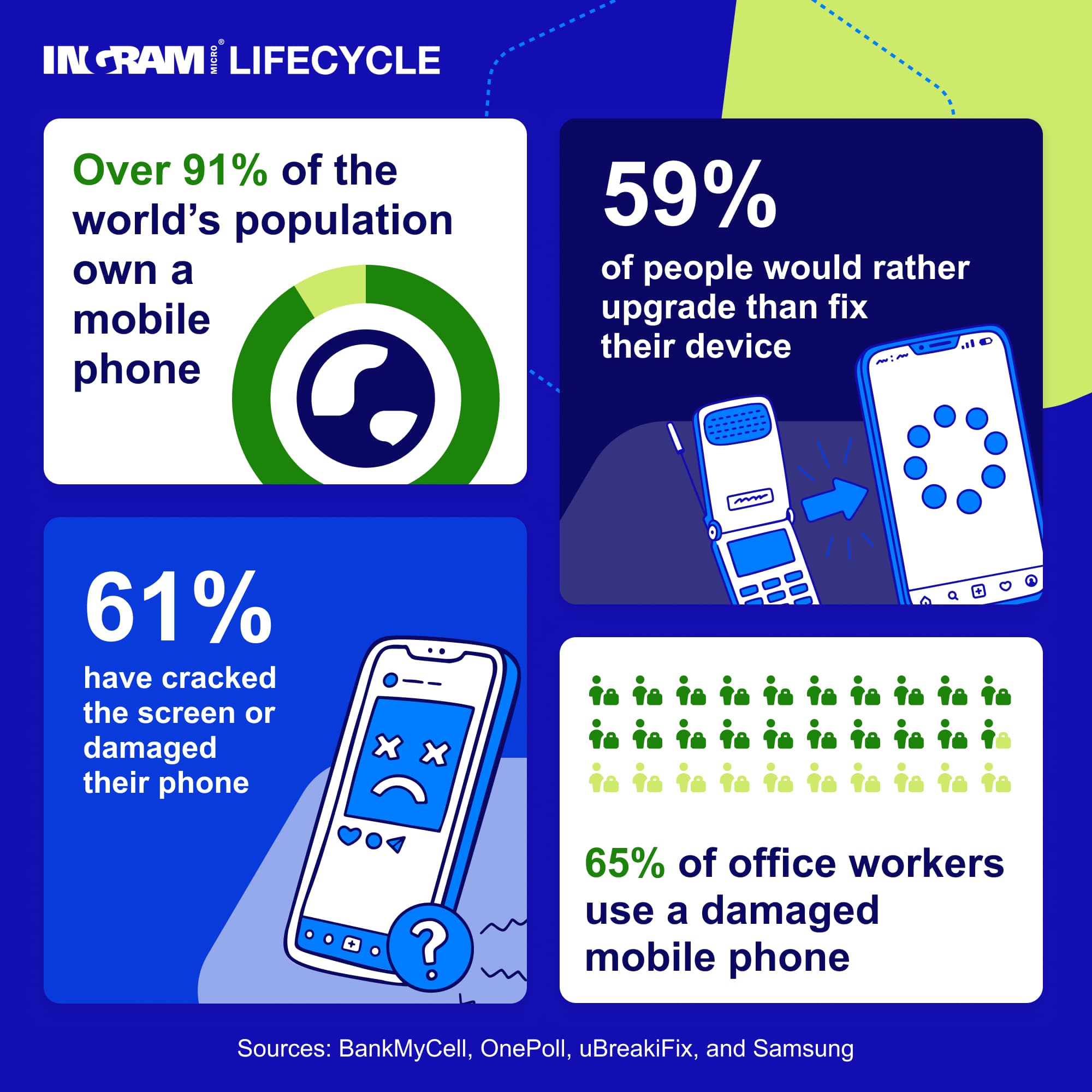
It’s typically costly to replace a smartphone screen. The repair may not be cost-efficient if the overall residual value doesn’t warrant replacing the screen. As a result, smartphones head straight to recycling or landfill.
When combining different processes, it’s possible to avoid a complete replacement screen by removing the single damaged layer of glass.
The screen repair service created by Ingram Micro Lifecycle does just that.
This solution for salvaging devices avoids sending them to landfill and extends the lifecycle. The fixed device, with its useable condition restored, can be re-loved.
Your circularity opportunities with damaged screens
If the phone user doesn’t seek a repair for their smashed screen, this may be a problem you inherit on receipt of the device.
These touchpoints are where smartphone screen repair can save money and extend the device lifecycle, boosting your sustainability efforts and enabling a circular economy.
Trade-in
Damaged traded-in devices will be a lower grade, worth less, than those in near-new condition. While the value paid to the customer will represent the damage, you can’t move it on as quickly as if it was in near-new condition.
By engaging in screen repair services, you’ll increase the grade and the value of the device, making it easier to recover maximum value.
Sourcing refurbished stock
If you’re looking to source and supply refurbished stock to your customers, then it’s likely that you’ll come across smashed screens. If you source products like this, then you’ll know the grade isn’t high enough to be put back out onto the market in the current condition.
The screen repair process can restore these devices, rather than letting them sit on your balance sheets or go to landfill. Once the screens are repaired, the devices will be graded higher and recover a higher value.
Leasing/DaaS (Device as a Service)
Rented or leased products at the termination of the contract may come back needing repair. These devices will need to be restored to a like-new condition so they can go out to the next user.
Devices can also be damaged while with the user and protected by the contract. You should exchange the device and repair it, so the user experience is maximized and downtime minimized.
You could use a pool of refurbished devices as swap stock so the customer is re-connected as quickly as possible.
Field services
For enterprises and business customers, the same applies to leased/rented products.
You’ll be under contract to offer repairs for smartphones to ensure employees can conduct business as usual.
This means recovering the damaged device and repairing it.
Returns management
Though it would be rare to get a phone returned that has a smashed screen, it is possible.
Perhaps it was dropped during delivery, or the customer is trying to cover their own mistake.
It could be that a customer is trying to return a new phone, and you check the product to find the screen is smashed.
Ultimately, you have a smartphone that can be repaired to avoid adding to e-waste.
Phone screen repair- improve your circularity
Are you ready to improve your sustainability efforts and recover the maximum value on preloved devices with smashed screens?
Repairing smashed screens ensures that smartphones avoid landfill by improving their quality and condition, enabling re-use.
Through Ingram Micro Lifecycle’s innovative LCD repair service, the top layer of glass can be replaced which removes the need to replace the full screen, saving costs.
If you’re looking to quickly restore smashed smartphone screens to a like-new condition to eliminate the impacts of depreciation, get in touch with our team today.
Continue learning with these helpful articles:



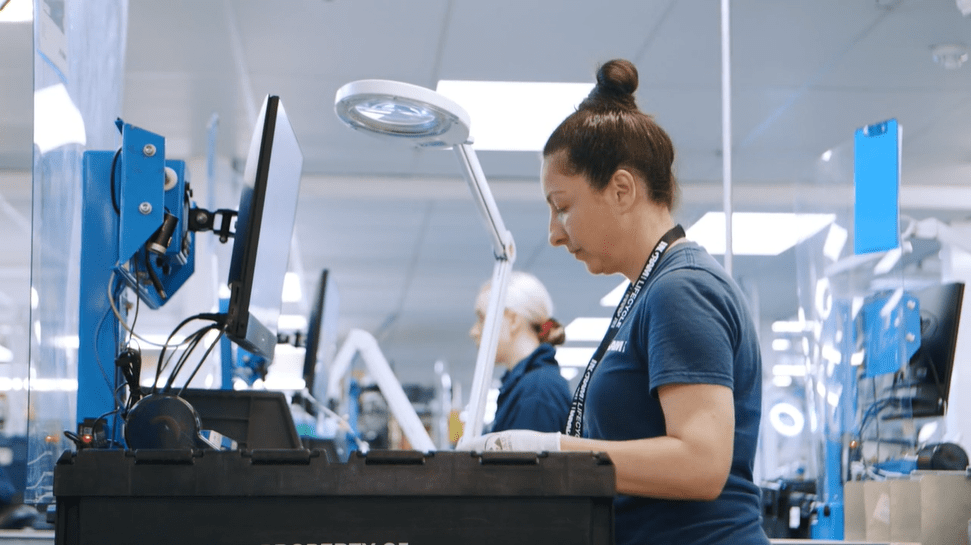
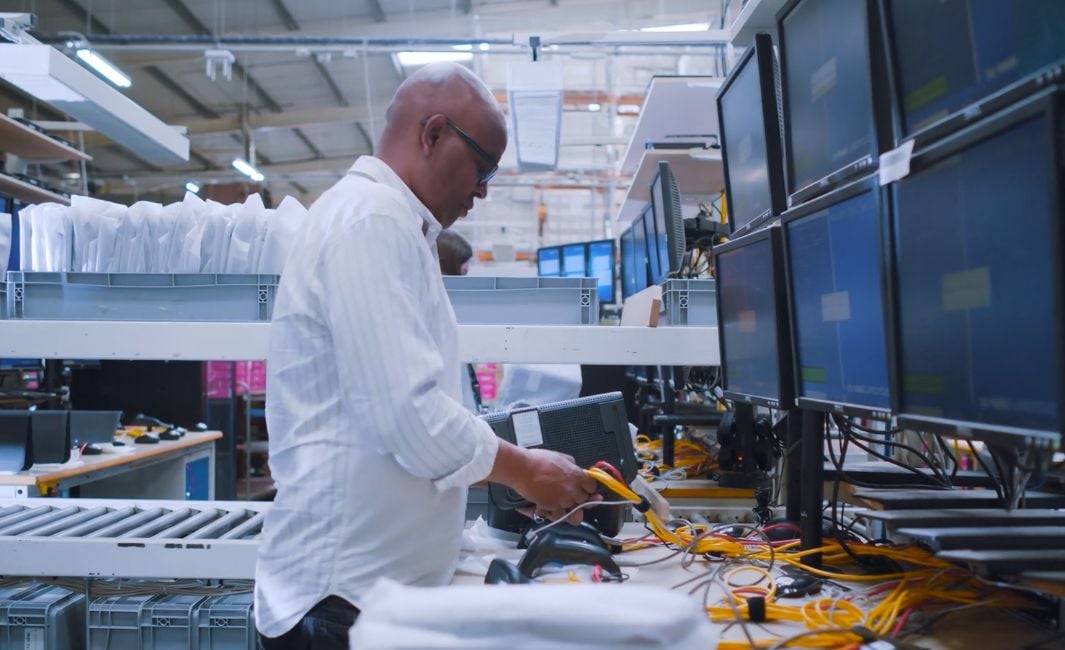



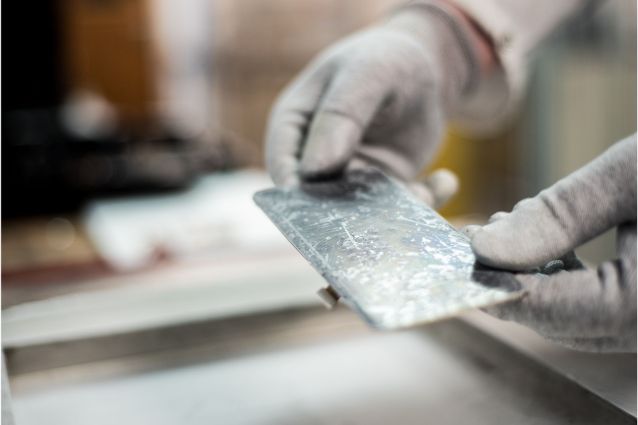


.jpg?width=450&height=250&name=smarthphone%20repair%20using%20freezing%20method%20(2).jpg)
